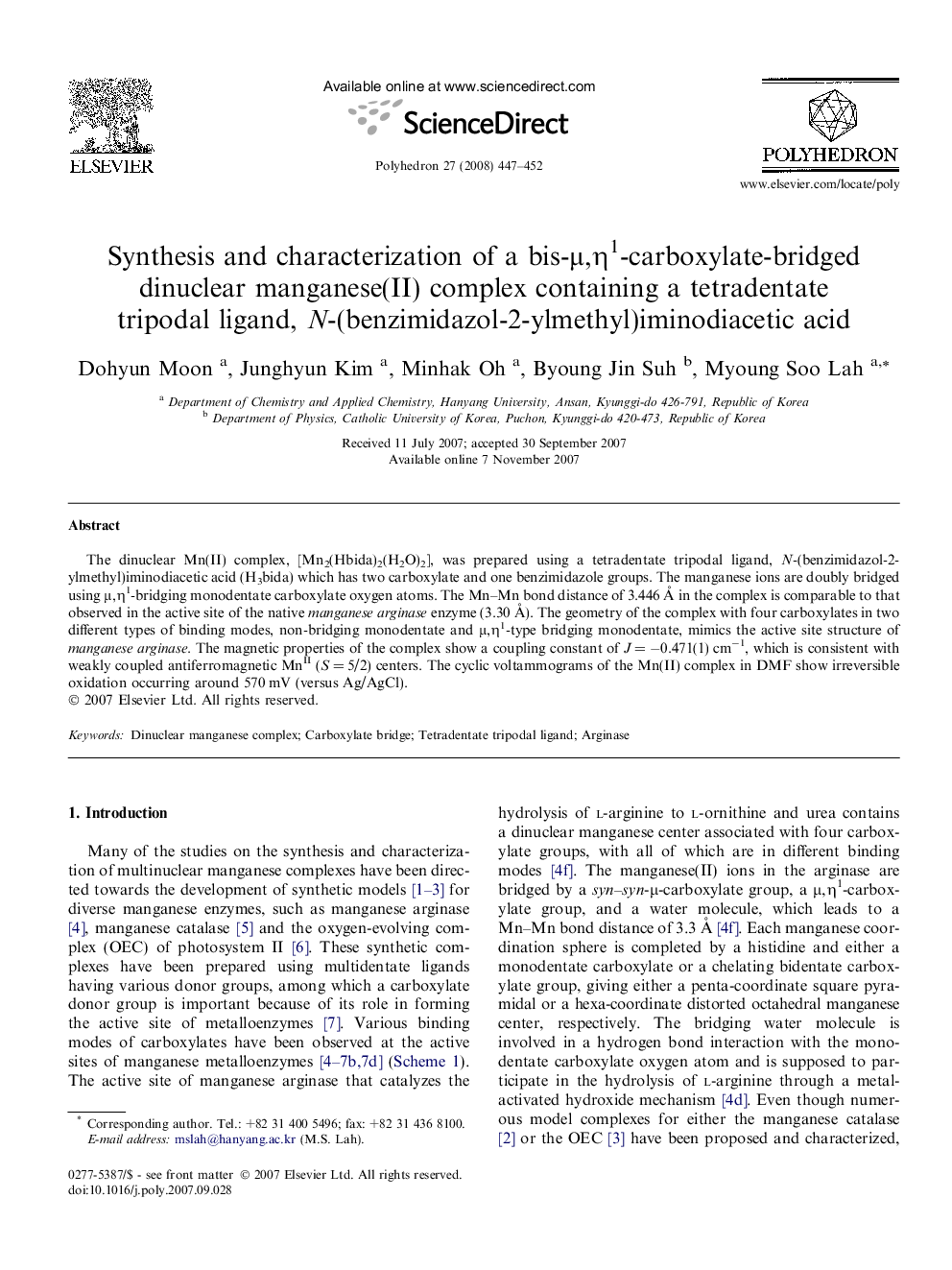| Article ID | Journal | Published Year | Pages | File Type |
|---|---|---|---|---|
| 1339618 | Polyhedron | 2008 | 6 Pages |
The dinuclear Mn(II) complex, [Mn2(Hbida)2(H2O)2], was prepared using a tetradentate tripodal ligand, N-(benzimidazol-2-ylmethyl)iminodiacetic acid (H3bida) which has two carboxylate and one benzimidazole groups. The manganese ions are doubly bridged using μ,η1-bridging monodentate carboxylate oxygen atoms. The Mn–Mn bond distance of 3.446 Å in the complex is comparable to that observed in the active site of the native manganese arginase enzyme (3.30 Å). The geometry of the complex with four carboxylates in two different types of binding modes, non-bridging monodentate and μ,η1-type bridging monodentate, mimics the active site structure of manganese arginase. The magnetic properties of the complex show a coupling constant of J = −0.471(1) cm−1, which is consistent with weakly coupled antiferromagnetic MnII (S = 5/2) centers. The cyclic voltammograms of the Mn(II) complex in DMF show irreversible oxidation occurring around 570 mV (versus Ag/AgCl).
Graphical abstractA dinuclear manganese(II) complex has been prepared using a tripodal ligand, where the complex mimics several important structural features of the manganese arginase core, such as the simultaneous presence of both μ,η1 bridging carboxylate and non-bridging monodentate carboxylate binding modes, and an intramolecular hydrogen bond involving a coordinated water molecule.Figure optionsDownload full-size imageDownload as PowerPoint slide
